Public Pier — No Fishing License Required
(Currently closed and probably destined to be closed until at least 2020)
Every oceanfront pier in California has, at one time or another, had to be rebuilt or at least in great part repaired and renovated. Winter storms that can magnify the wind, waves and ocean currents have routinely damaged and many times destroyed whole piers. Careless users of the piers can cause fires that can quickly consume wooden piers and structures. Age, simple age, is also a killer; the older the pier the more likelihood of weakness and rot developing.
Today the latter seems to have taken its toll and the pier is closed. It’s just the latest closure for the pier that was destroyed and rebuilt in the ’80s, saw a nearly two year closure in 1999-2000, and now faces an uncertain future (although the authorities say IT WILL be rebuilt). We hope they are right.
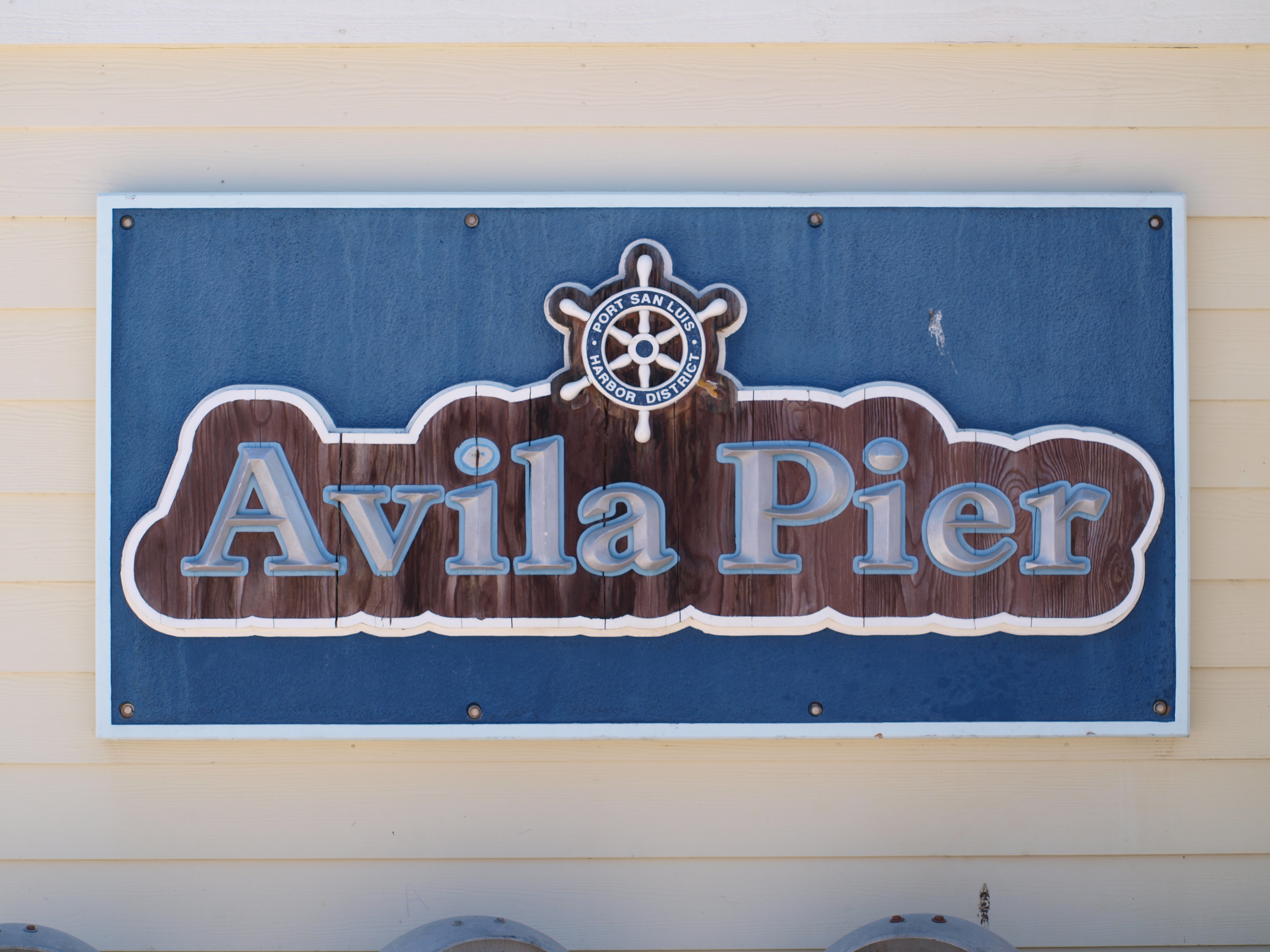
Although piers have routinely been rebuilt, no pier to my knowledge has seen an entire town that it sits in also be rebuilt, none except for the Avila Pier.
Most of Avila Beach, the three-block by three-block, beachfront town, was closed for much of 1999 and 2000. The town was “destroyed in order to save it.” Save it from what? Well, it seems that in 1989 a 400,000-gallon plume of oil was discovered bulging directly underneath the town, oil that came from a series of underground pipes connecting to a large Unocal oil storage facility that set just up the hill from the town (with tanks dating back to 1906). Since the oil threatened the environment, especially that of the beach area and the nearby San Luis Obispo Creek, the verdict was clear—it had to be removed. But sometimes that is easier said than done.
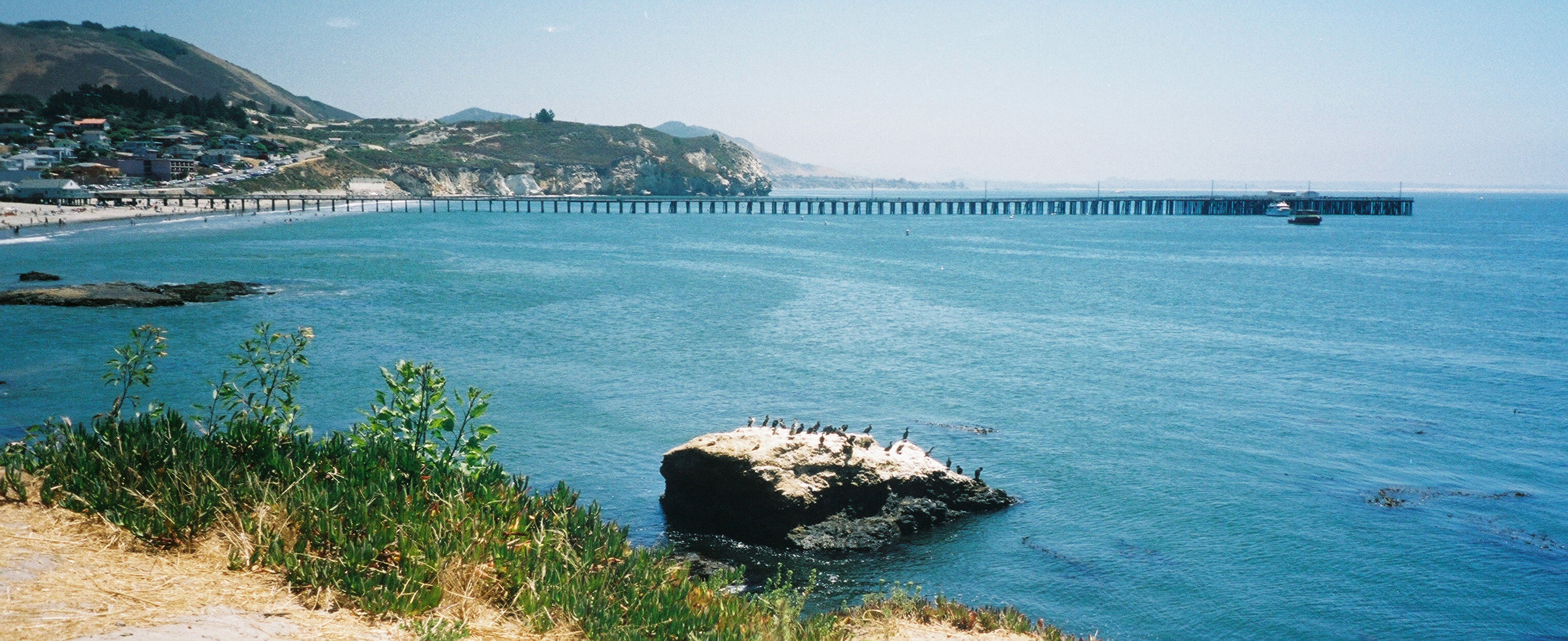
Years of argument and finger pointing eventually led to an $18 million dollar cleanup by the oil company. Much of the town, including basically the entire beach area, was closed off and dug up. The pier of course had to be closed and didn’t reopen for more than a year but during that year they did replace the 150 feet of the pier, the entrance to the pier.
Luckily, no oil had leaked into the ocean or into San Luis Obispo Creek, at least as far as is known. Luckily too, most of the businesses survived the closures and reopened with the town. The opening was good news for the 300 or so residents of Avila Beach and the town quickly regained its status as a favorite spot for locals and more distant visitors that know its location.
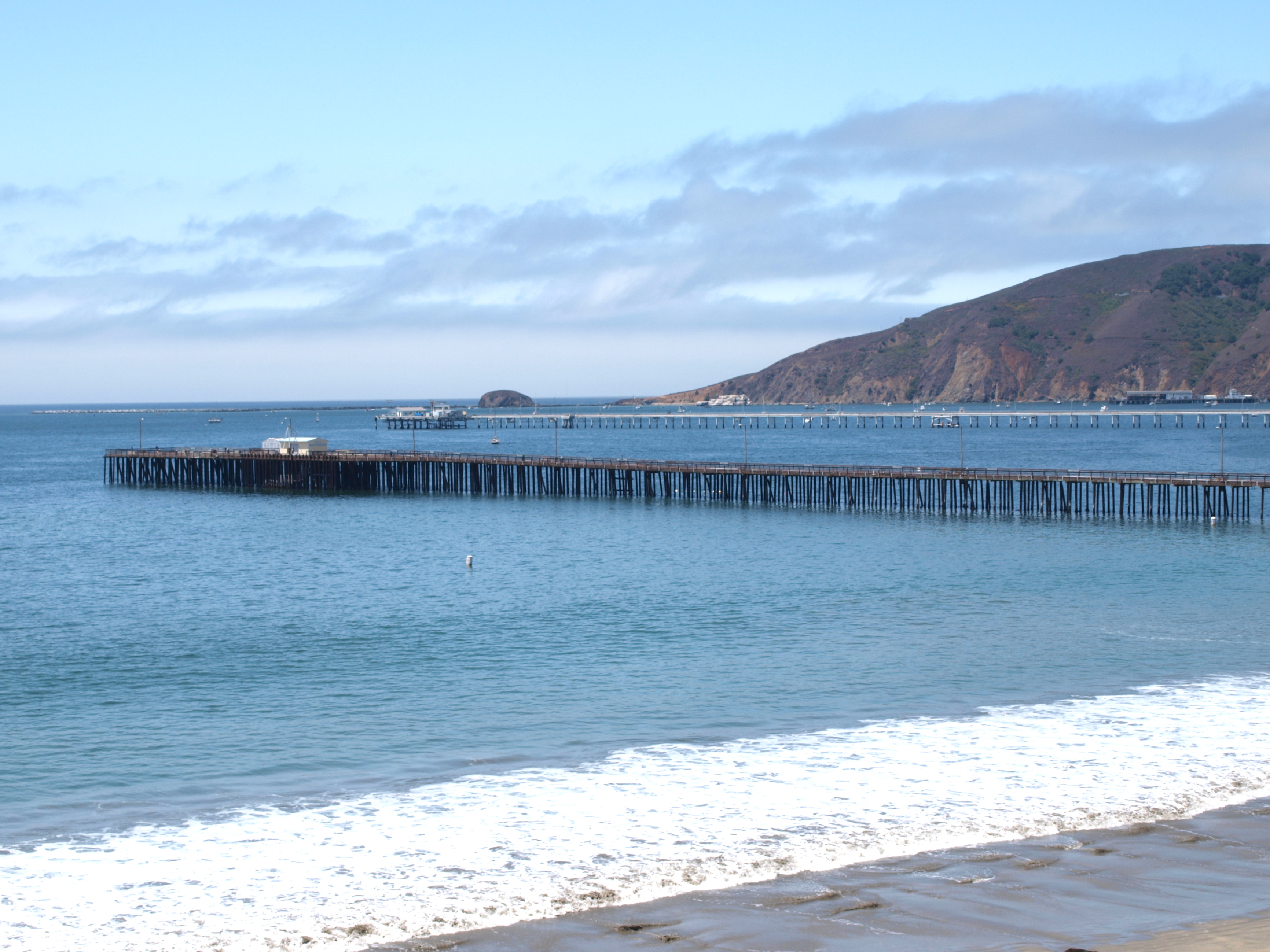
I say visitors that know its location because it is sort of a Timbuktu, out of the way spot, one easily missed by travelers going full speed, north and south, on the Highway 101 trail. It’s roughly halfway between Pismo Beach and San Luis Obispo (seven miles each way) and half way between Los Angeles and San Francisco. After leaving the highway you wind your way back to the northern portion of San Luis Obispo Bay. The short three-mile, five-minute or so trip is well worth the effort.
Your first beach stop will be Avila Beach itself; continuing down Avila Beach Drive along the long but narrow beach brings you to a second pier, one that was formerly the Unocal Pier but today is home base for the Cal Poly Center for Coastal Marine Sciences (usually simply called the Cal Poly Pier). A little further down the road leads to Port San Luis and its pier, once known as the Harford Pier.
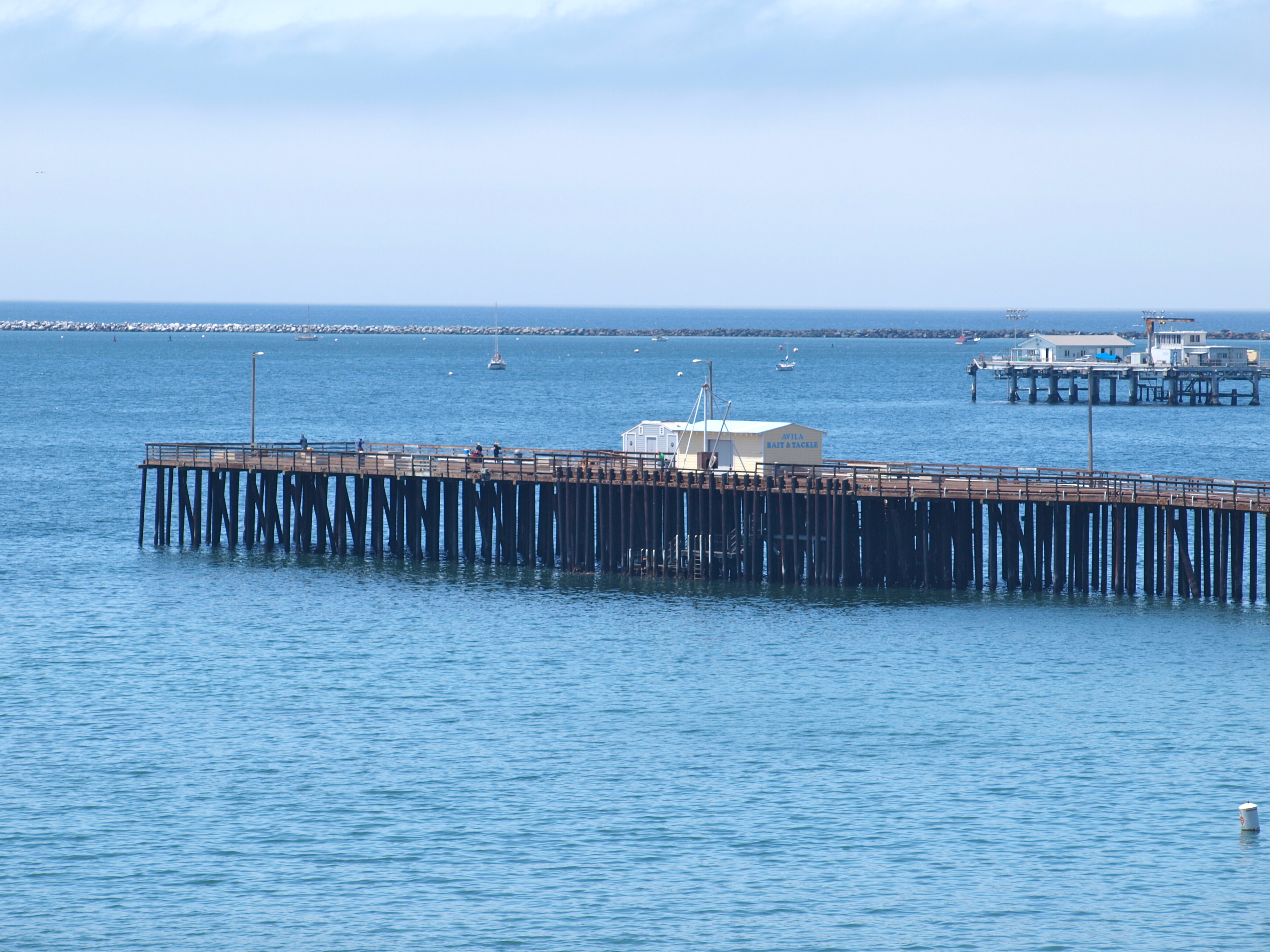
One small bay and three piers, two of which can be used by fishermen. Add in attractive and accessible beach facilities, as well as a variety of camping and lodging opportunities, and you’ll soon see that it’s a great place to visit. Many people, especially those from the hot inland areas, make it a yearly destination.
The beach area itself (Avila State Beach) offers excellent facilities and a microclimate that is both warmer and more fog free than nearby Pismo Beach or Morro Bay (it’s often sunny when Pismo is blanketed in fog). The beach is home to sunbathers, boogie boarders, surfers, and a plethora of moms and kids who converge on the beach hailed at one time as the “safest beach in California” due to its generally mild surf, lack of undertows, and low number of drownings.
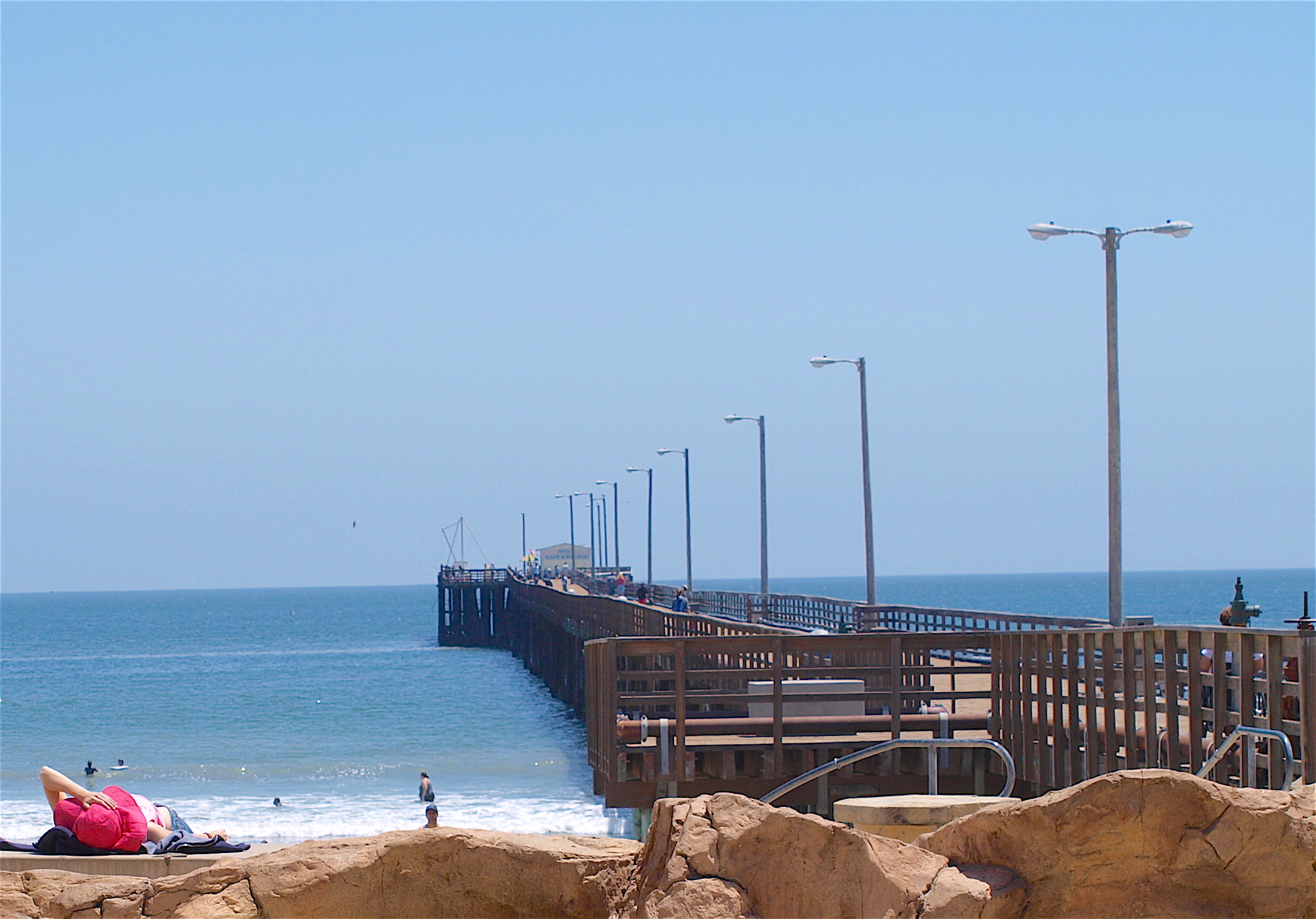
More than any other beach town along the central coast, Avila Beach had, before the rebuild, the look and feel of a Southern California beach town, albeit a mid-20th century‘50s beach town; one that hadn’t suffered the over development so common to towns to the south.
After the rebuild a concern of many was that the town would lose its Bohemian, funky flavor and though there was an effort to preserve the historic buildings, the fears to some extent have been met. It wasn’t enough to just rebuild the town, it had to be spiffed up. Someone decided to take the perfectly fine, nondescript Front Street and turn a section adjacent to the pier into a Mediterranean-style promenade (pedestrian plaza) complete with ocean-themed light poles, benches with faux sea stars and snails, and a tide pool-imitating water fountain. It’s sort of a one-block reincarnation of Avalon’s Crescent Avenue, or at least it has that feel, and some will find it pretty. But with the changes Front Street, had indeed acquired a somewhat SoCal yuppified “New Avila” feel to it. One critic said it had been botoxed.
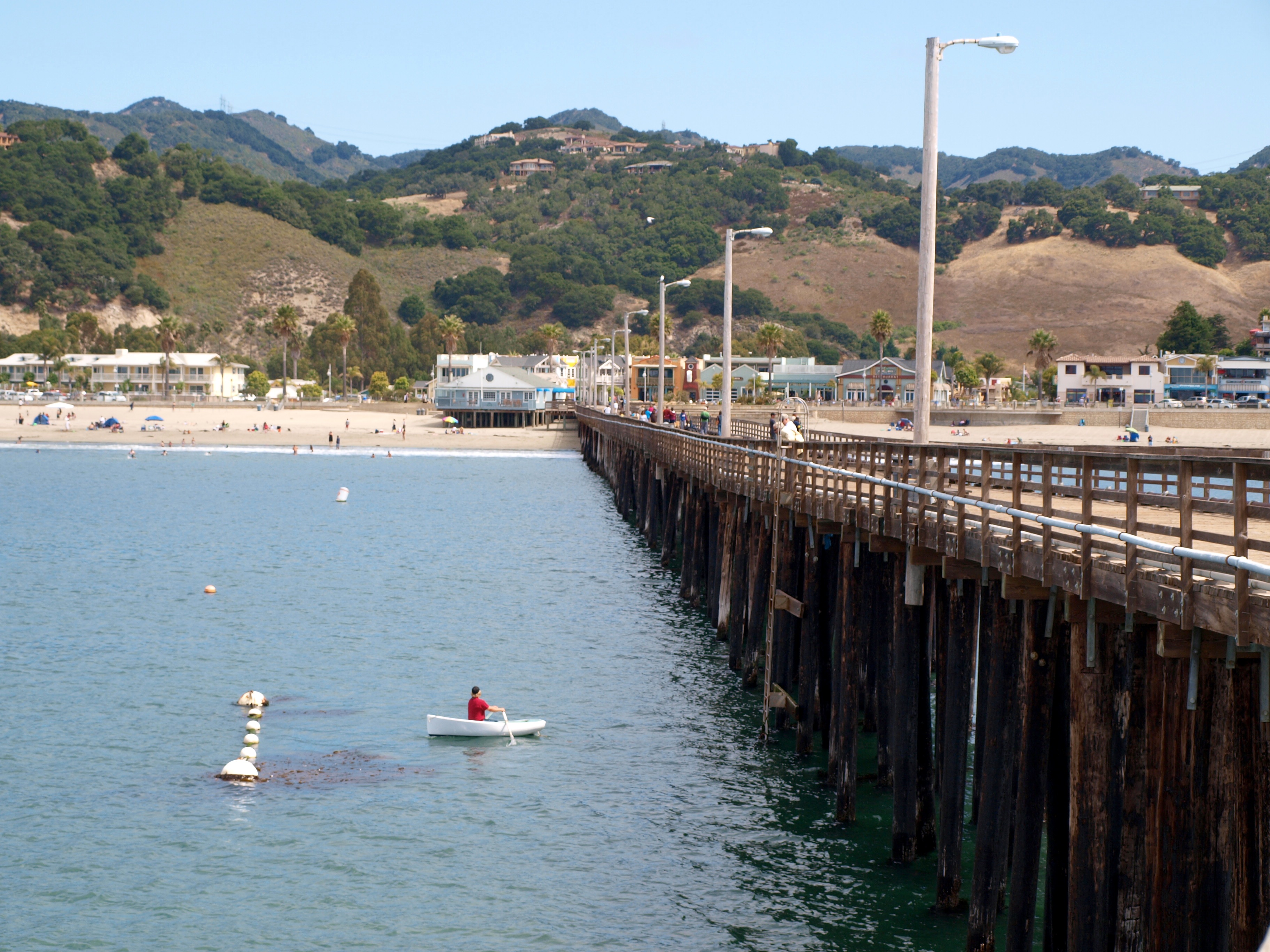
The question was would it age well and I certainly had my doubts. To me the changes had the nasty stench of 21st Century cute, a feeling that can be duplicated just about anywhere by over-zealous boosters. A retrograde, gnarly, old-time stink bait feeling is what I prefer. But I am old (and probably outdated in my beliefs).
But, the bacillus didn’t spread beyond that single street — for a while. Then money seemed to move in, older hotels were spruced up and new hotels added. Businesses that once served the town’s locals now geared up to serve the increasing mass of tourists. With the tourists came tourist prices, a simple economic principal called supply and demand. Businesses are in business to make money and if the visitors will pay the price we are willing to provide the product. It makes sense but I do wonder about those 300 citizens who lived in the small town in 2000. The population had risen to just over 1600 by 2010 and is only limited by the size of the town and the prices of homes and apartments that have skyrocketed since the town reopened. The streets are crowded and the parking at times is simply non-existent. Such is progress.
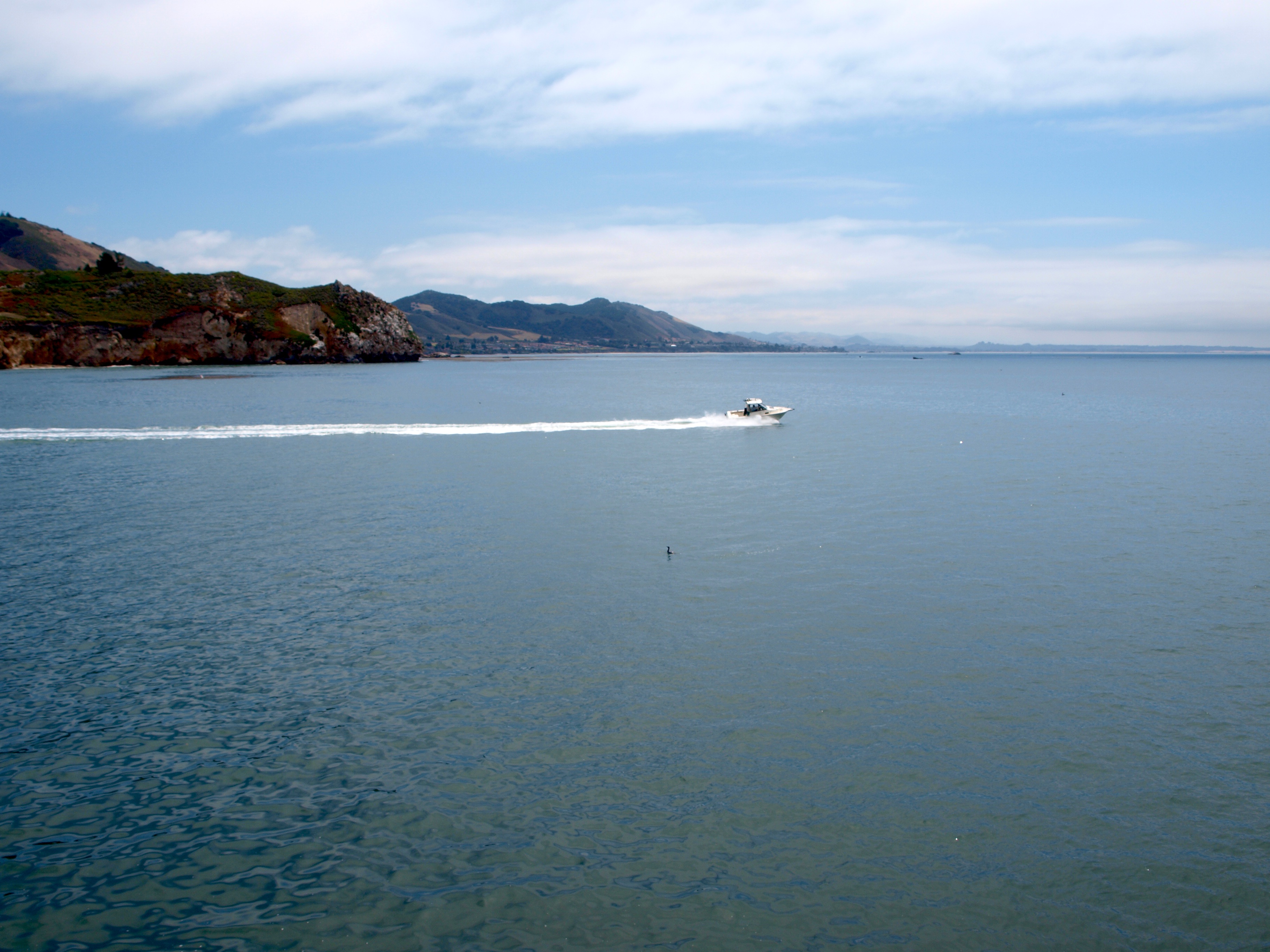
Looking south down the coastline
Environment. The pier is 1,685 feet long and 20 feet wide for much of its length but widens out to sixty feet at the end. The surface is approximately 22 feet above the water (so do remember to bring a net).
The pier sits on Avila Beach and mid-point in San Luis Obispo Bay with Fossil Point nearby to the east. The Avila Sea Caves, Smugglers Cove and Pirates Cove (with its nude beach) are further east. Just a short distance up the beach, to the west of the pier, sits San Luis Obispo Creek (which may account for infrequent catches of small steelhead at the pier). Up Avila Beach Drive is located two piers, the Cal Poly Pier and Port San Luis, while at the western end of the bay is located Point San Luis, Whalers Island, and a long jetty. The jetty and rocky points provide generally good protection from the wind and waves, and the waters around the pier are generally fairly calm.
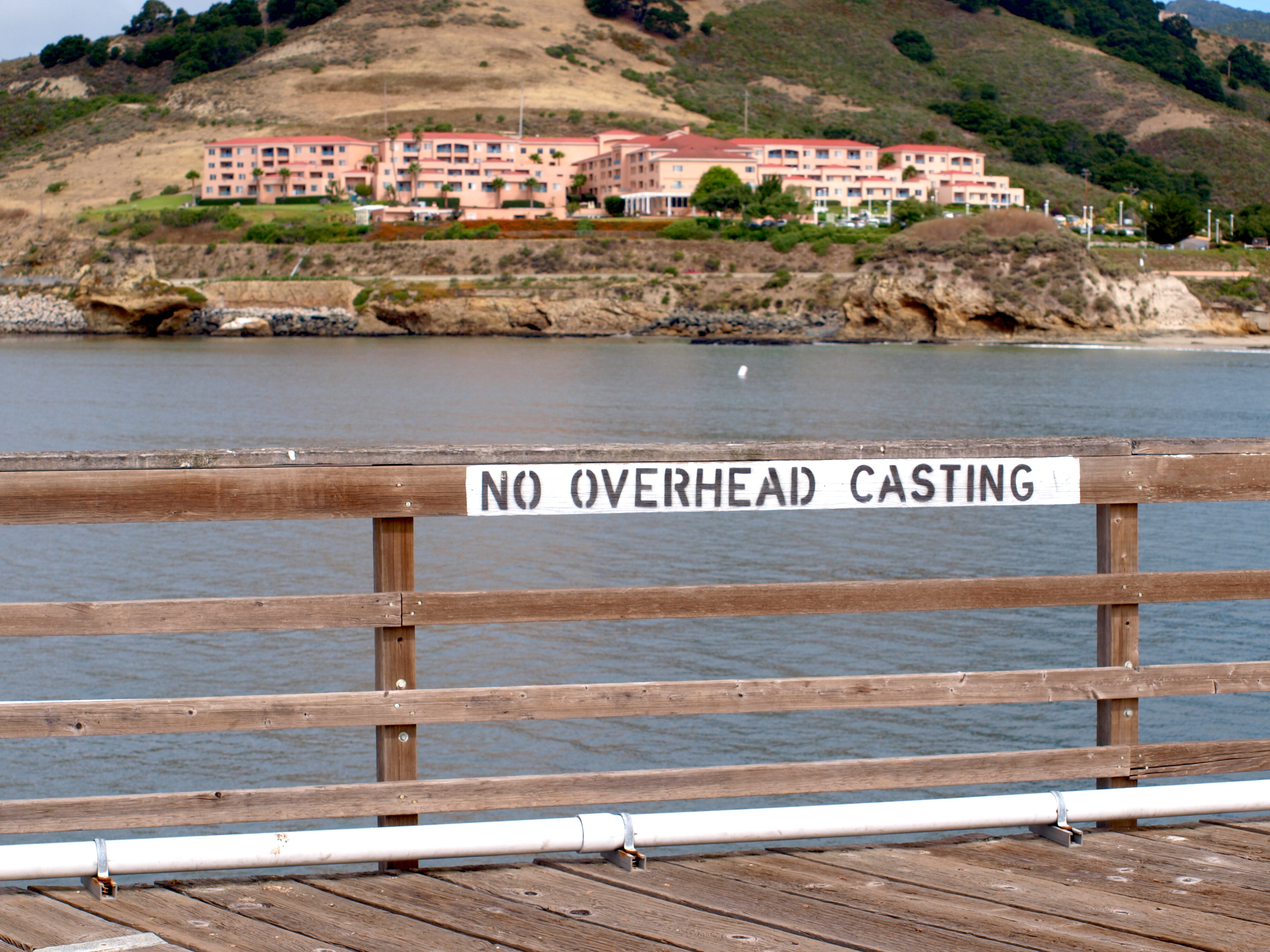
Water here, at least until the mid-pier area, is fairly shallow and the bottom is primarily sand and mud. However, at the pier’s end the water is fairly deep (befitting an old shipping pier). Pilings have a good covering of fish-attracting mussels and barnacles so the pier itself can, at times, serve as a reef attracting fish, mainly perch.
Just a short distance up the beach, to the west of the pier, sits San Luis Obispo Creek. The pier sits mid-point in San Luis Obispo Bay, its location provides good protection from the wind and waves, and the waters around the pier are generally fairly calm.
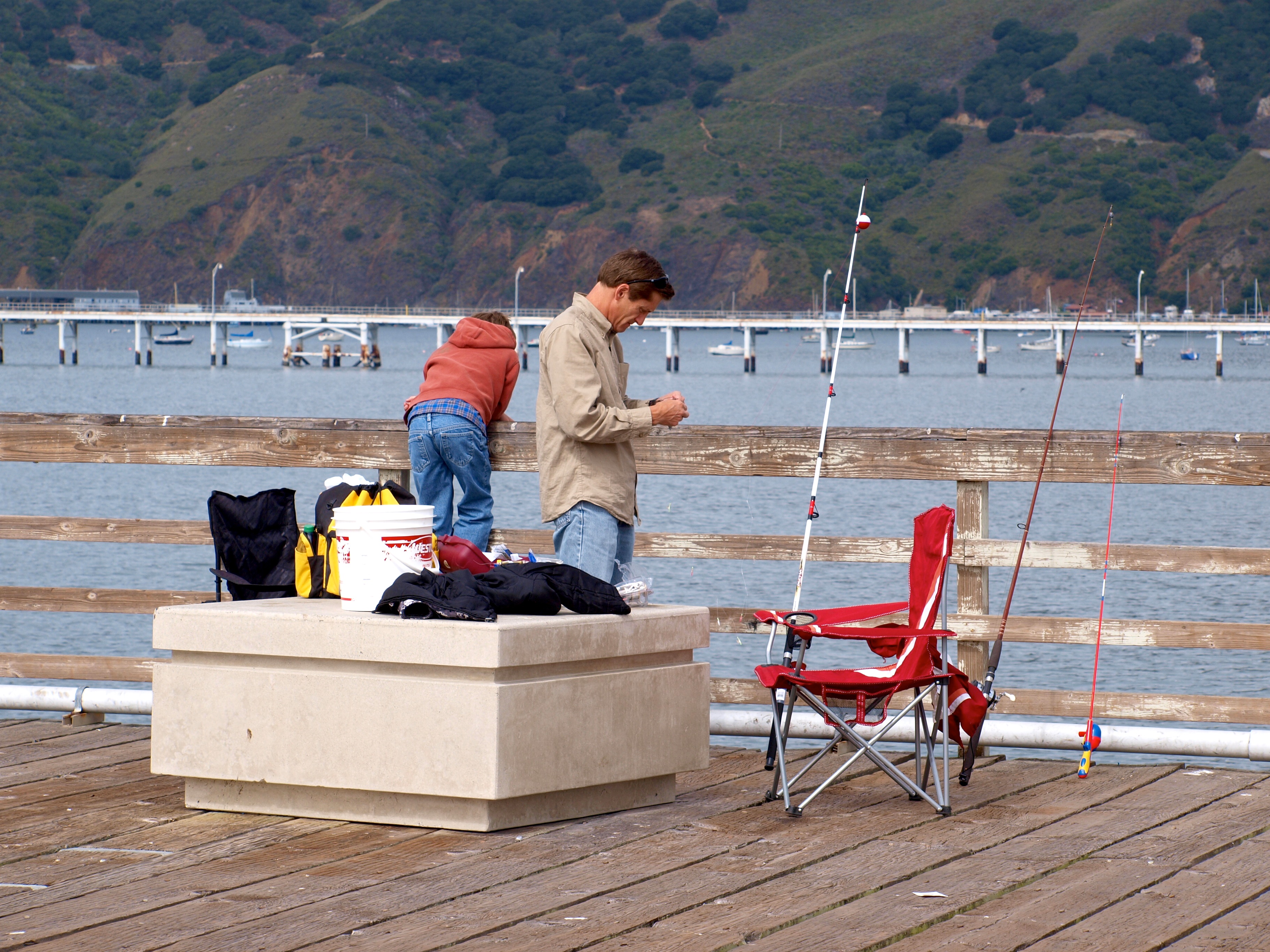
Nevertheless, winter storms can do damage as has happened several times. Perhaps the most devastating damage was inflicted by the El Niño-generated storms of 1983 that broke the pier into several sections. The pier was not restored for five years but finally reopened in 1988.
It would see another closure during the time the town itself was being restored (1999-2000). At that time the harbor district replaced the first 150 feet of the pier and the pier seemed in excellent condition. However, in June 2015 the harbor district closed the pier “in an abundance of caution” after seeing the pier sway during a time when very large crowds were on the pier watching humpback whales in the bay. A check by divers indicated that some pilings had seen deterioration. Today the coast of repairs is estimated at $10-12 million dollars. The harbor district continues to look at a variety of different plans (including one for a smaller pier) and is trying to figure out how to pay for basically a rebuild of the pier.
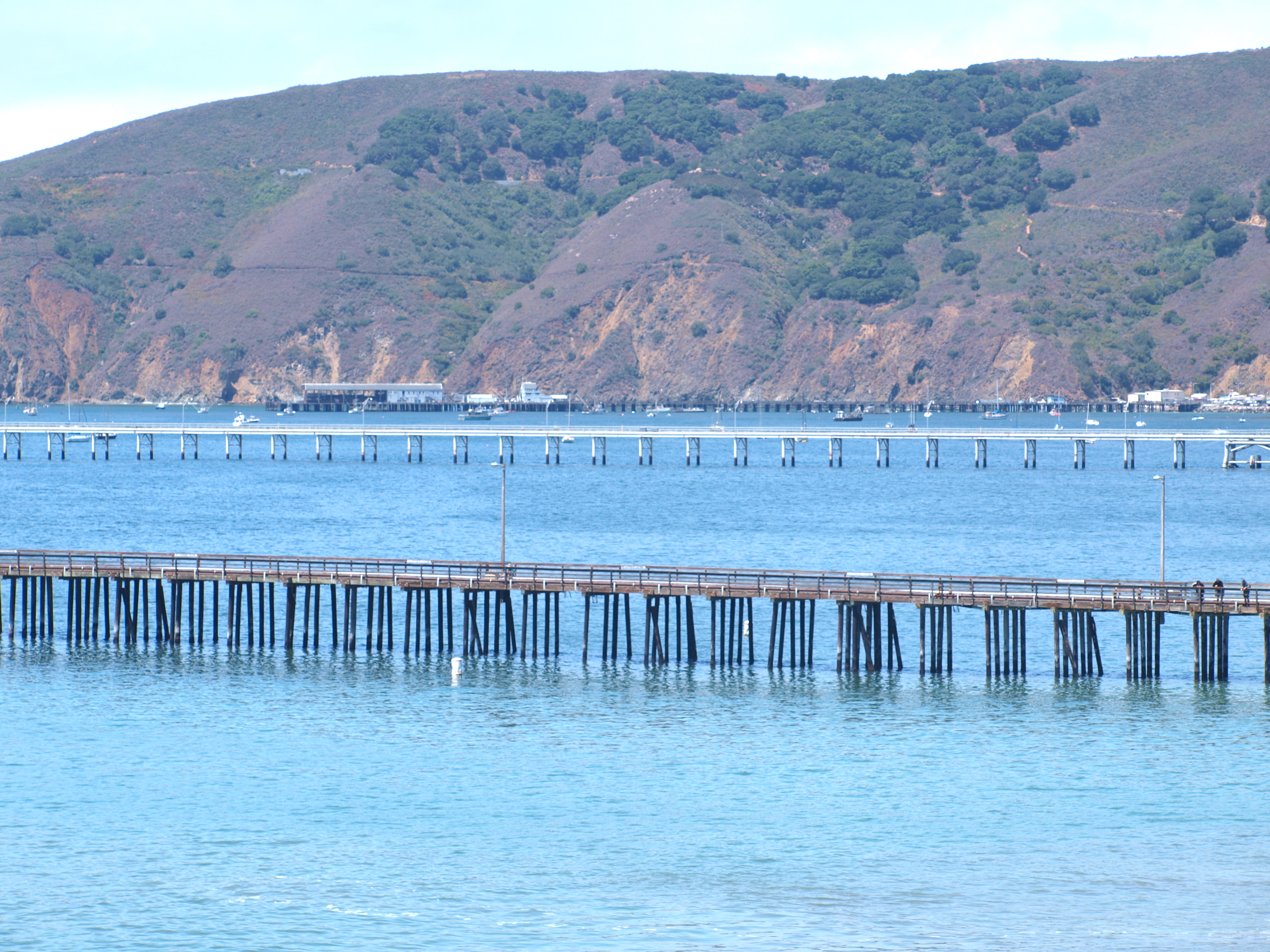
The three piers in the bay — the Avila Pier, the “Cal Poly” pier, and the Port San Luis Pier.
Fish. As for the fishing, the number of fish (quantity) is often very high but the big fish (quality) are less frequent. That’s true at most piers but here, perhaps due to the size of the pier, it seems that locals really have an advantage over the casual visitor. You need to know where the fish are, and the best techniques, and it isn’t a surprise that most of the quality fish (especially halibut and sharks) are taken by locals. However, the chance of fish is always here and that fact, combined with good weather, ambiance around the pier, and rarely crowded conditions on the pier, make it a popular destination venue. In many ways the pier itself reminds me of Newport Pier when I first fished it in the ‘60s. It has the feel of a big old wooden wharf and there is just something about it, especially at night that has the feel of its cousin far to the south.
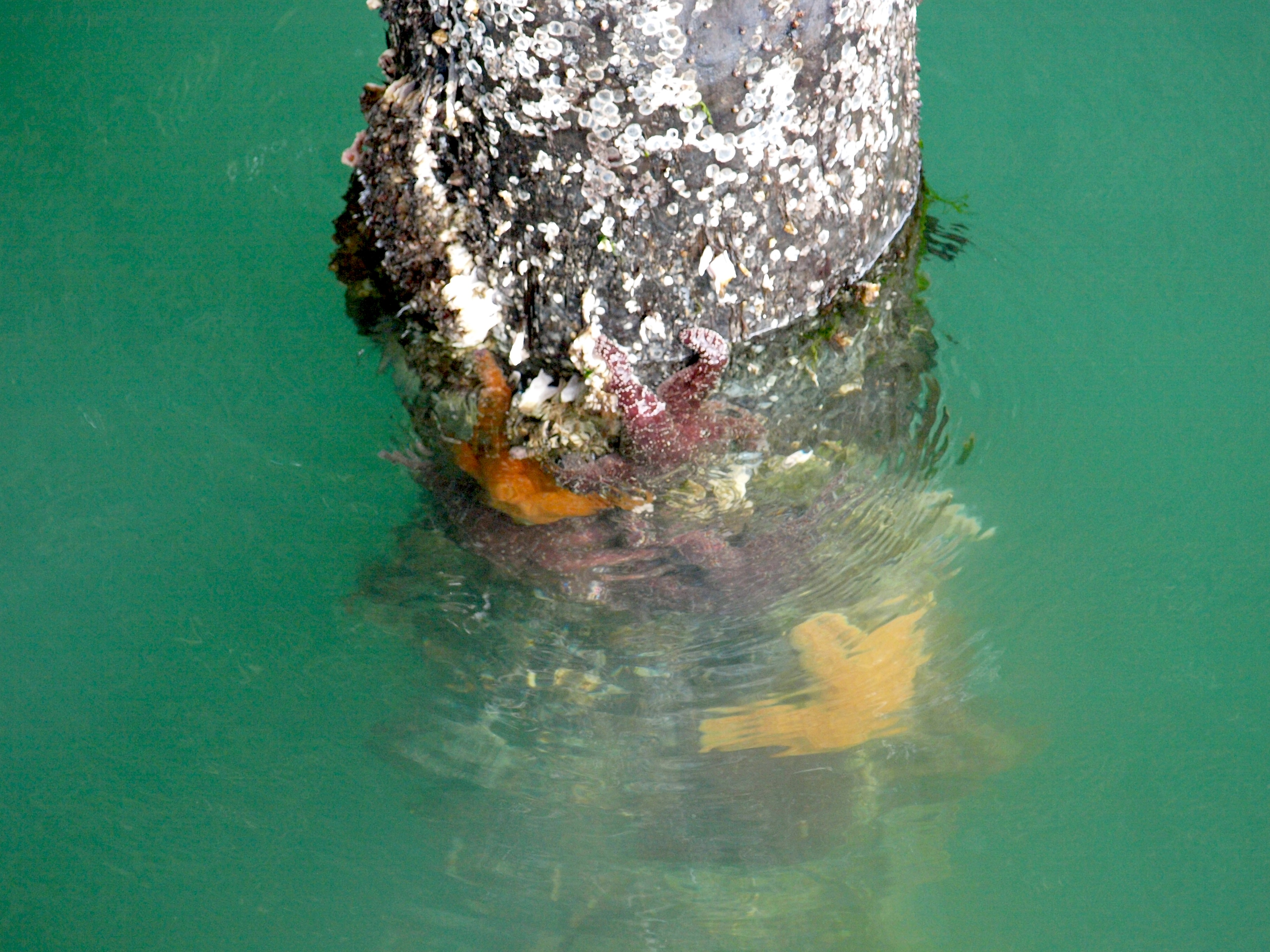
Most pilings have a variety of fish attracting organisms on them; in many ways they are artificial reefs of a type
Oh yes, the fishing. An example of Avila angling action happened to me one July night in 1990. I had arrived late, at nearly 8 P.M., and planned to fish for only an hour or so. I quickly began to catch fish but everything was small: white croaker, speckled sanddab, bocaccio (red snapper), a lone walleye surfperch, and pesky staghorn sculpin. I was just about ready to leave when a resident wandered by. He stopped, lit up a cigarette, and asked how I was doing. I told him the action was fair, nothing spectacular, and that I was going to call it quits. He then said I might want to try nearshore, right under the pier. He said there was a large school of pileperch at that spot and that he had been catching them there every morning for the past week. I didn’t have any sand crabs, which he said was the best bait, but I did have some mussels and decided to give it a try.
Soon my bait was under the pier in the surf area and before long, I had a bite. It was a barred surfperch, just over a pound, and plump full of baby fish ready to emerge. Another cast produced another fish; only this one was about a pound and a half. Soon, another fish, a two pounder. This kept up for the half hour or so I fished, and the fish kept getting bigger until I finally had to walk one through the surf and up to the beach before I dared pull it up onto the pier (I was using a light rod with 6-pound test line). The fish were all barred surfperch and most displayed the scrappy fight that characterizes the species. I don’t know how many fish I could have caught but I kept only as many as I could use and experienced some great fun.
The main fish here is white croaker. Early Department of Fish & Game studies (CA Fish Bulletin #130, 1958) showed that Avila had the highest fish-per-angler average of any pier in the central coast area. Of the fish counted, two-thirds were white croaker; in fact, their numbers were four times higher than the next highest species — jacksmelt. These were followed in order by walleye surfperch, shiner perch, calico surfperch, barred surfperch, jack mackerel, silver surfperch, bocaccio, queenfish, striped seaperch, staghorn sculpin, pileperch, Pacific sanddab, “sharks,” cabezon, starry flounder, white perch and “skates.” Of note was the high number of queenfish, a SoCal species, and starry flounder that have seen their numbers drop drastically.
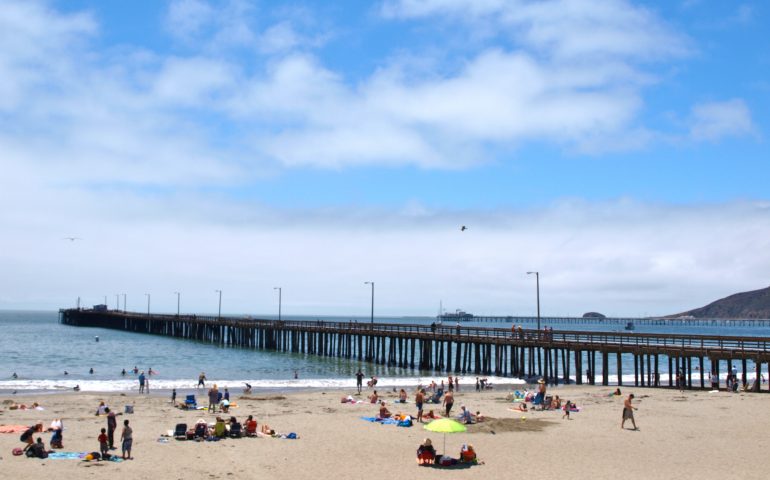
It’s halfway reopened now: https://ksby.com/news/2019/04/26/large-portion-of-avila-pier-reopens
Can you fish off the jetti coming off of whalers Island.